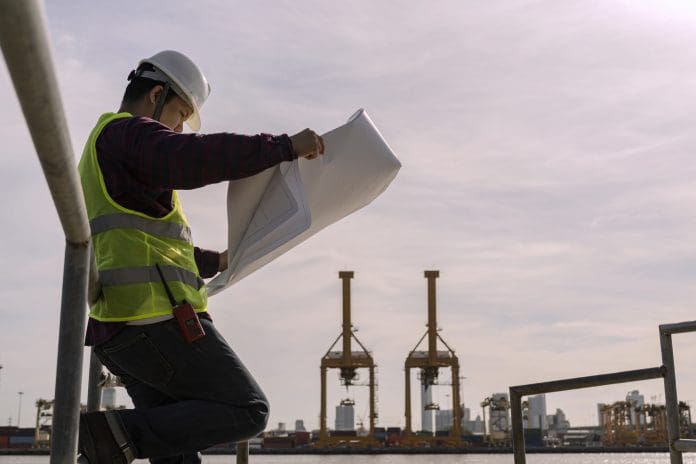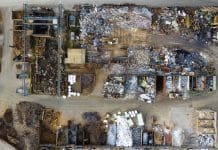David Harris, CEO of Premier Modular, explores how offsite manufacturers are playing a crucial role in the circular economy by producing reusable, reconfigurable, and rental buildings with low-waste practices
Repurposing existing buildings generates between 50 and 70 percent less carbon emissions than the construction of new facilities, as fewer materials and processes are required, reducing or eliminating waste as a result.
In the UN’s report, Building Materials and the Climate: Constructing a New Future, this approach to building was proposed as a key means of adopting a circular economy and decarbonising the built environment by 2050 or earlier.
Offsite manufacturing has an important role to play in spearheading the move to circularity
In this regard, offsite manufacturers have been one step ahead of the curve for some time, producing reusable, reconfigurable, rental buildings via low-waste practices.
With the UK’s path to net zero accelerating, offsite manufacturing has an important role to play in minimising the impacts of the built environment by spearheading the move to circularity.
How does offsite manufacturing support the circular economy?
Offsite manufacturing inherently facilitates the circular economy. The practice is about maximising the precise use of materials to create bespoke solutions, with a focus on the life cycle of a product.
In the case of rental solutions, the emphasis is on how it can be repurposed for full circularity.
Components are manufactured accurately for their scheduled use in the assembly of a building to limit wasted offcuts and defects that would require components to be fixed or replaced.
The lean manufacturing processes ensure the business prioritises operational efficiency to drive high-level productivity and control waste.
Typically, offsite manufacturers couple this approach with a ‘right-first-time’ culture to maintain quality throughout the value chain. Projects are assessed for their lifespan and not just on capital cost alone.
Fostering this perspective early in the design phase allows for greater focus on the materials and systems required to limit the building’s operational carbon throughout its use.
How digital technologies are speeding up the transition to a circular economy
Developments in digital technologies promise to bring offsite manufacturers even more in step with circularity.
Such tools are optimising the accessibility, management and application of high-quality data to improve decision-making and allow manufacturers to achieve more sustainable processes and products.
For instance, applications of building information modelling (BIM) have become standard practice over the past two decades, with manufacturers leveraging the tool to digitally depict the design, assembly and maintenance of a building.
This ensures that components are used in the most efficient manner, meaning the building’s assembly design is optimised into the process, and potential issues are mitigated well ahead of production to limit waste.
Access to a digital imitation of a building has equally opened the door to the rising introduction of sustainable technologies into project designs.
Solar panels, rainwater harvesting systems and ground source heat pumps are among several technologies that are increasingly being incorporated into buildings to lower their operational carbon.
Green roofs have become a common feature in many projects due to their ability to convert carbon dioxide into oxygen, improve flood management by holding excess rainwater and support a building’s temperature regulation by providing insulation from the summer sun and colder temperatures in winter.
Digital twins and Internet of Things (IoT)
Due to the flexibility afforded by a controlled manufacturing process, offsite manufacturers are at the helm of embedding such clean technologies into their projects. In turn, this flexibility is enabling manufacturers to achieve net zero in operation buildings and reinforce their circular practices.
Other technologies are facilitating the transition to the circular economy too. Progress in digital twins and the Internet of Things (IoT) has brought greater connectivity between the physical and virtual worlds across the manufacturing industry.
Smart sensors can track real-time data about a product or assembly line and relay this information into software that translates the data into a live, digital twin of the physical entity.
In offsite manufacturing, applications of digital twinning could bring opportunities to further optimise the precision of manufacturing and assembling buildings, as well as improving waste management.
With all these technologies available, offsite manufacturers need to double down on their practices if they are to set an example for others to follow.
Environmental impact measurement
Measures that are beginning to be rolled out include the conversion of waste into energy to minimise the amount of material offcuts going to landfill – converting wood waste into biomass fuel, for instance.
Offsite manufacturers can equally take advantage of their factory-based location to support the transition to full circularity.
Operating from a large facility instead of multiple construction sites gives manufacturers the opportunity to install renewable energy sources, such as solar panels, to lower the embodied carbon of projects.
The controlled, fixed environment of the factory ensures this can be measured accurately, giving companies better insights into the amount of energy they are using. Reducing packaging and cutting down on the transportation of resources, alongside the planting of trees to offset carbon emissions, will equally drive the transition to circularity.
The impact of shifting toward the circular economy cannot be understated. Building waste sent to landfill increases habitat loss and damages biodiversity through the spread of pollutants.
Offsite manufacturers also promote biodiversity net gain through the use of sustainable foundation systems, such as screw piles, in projects for building support.
These foundations are a much greener alternative to the concrete slabs often used in traditional construction, as they are easily reusable and cause less disruption to biodiversity.
As the UK moves towards its first net zero milestones of 2025 and 2030, the expectation for a circular approach to be applied to the built environment will only intensify.
The time for championing more sustainable communities is now, and offsite manufacturers are paving the way.














